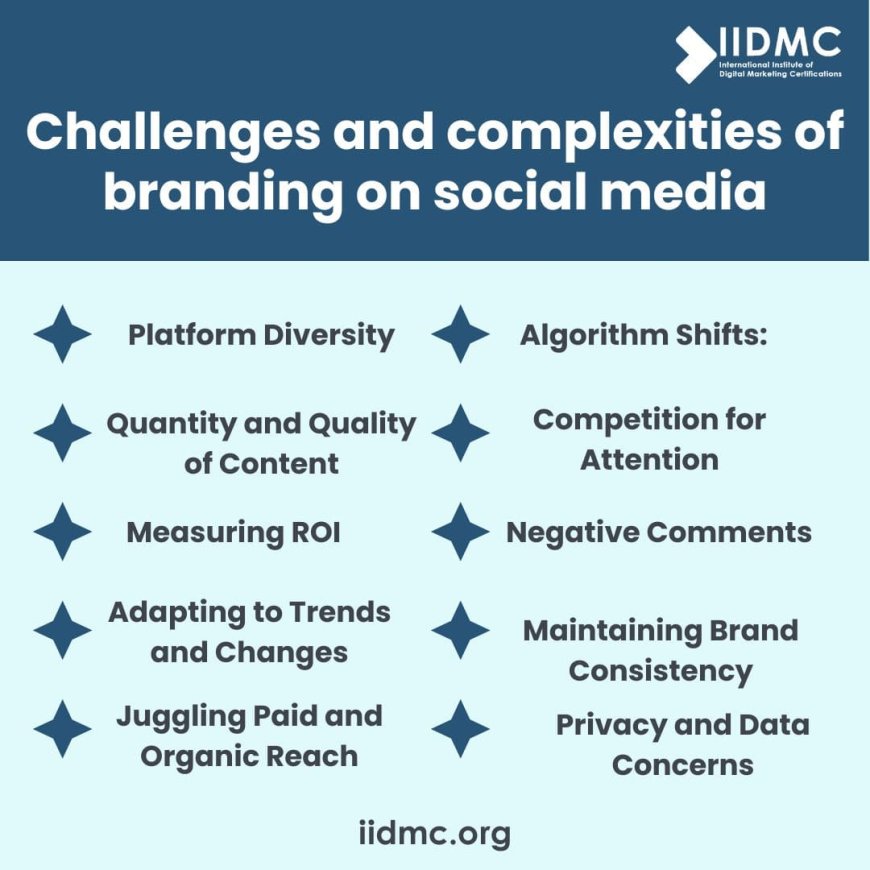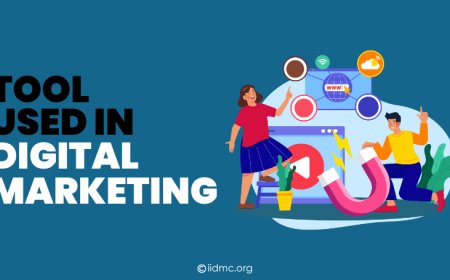The strategies for Social Media For Branding
Explore how to use social media for branding. Learn strategies to build your brand's presence and connect with your audience on social platforms.

Building a strong brand presence is crucial for business success in the current digital era, as consumers are flooded with options and information. Social media, an effective weapon, is at the centre of this effort. With only a few clicks, social media platforms have completely changed how brands interact with their audience and can now reach millions of potential customers. One can't highlight the role of social media for branding. It provides brands with a dynamic and engaging medium for expressing their identity, beliefs, and products to a worldwide audience. Every social media network, including Twitter, LinkedIn, Facebook, and Instagram, presents different chances for brands to interact meaningfully with their target audience.
Imagine you are launching a small company that sells handmade soaps. They smell fantastic and are made with all-natural components. You want to reach more people, so you sell a few to friends and family. That's when social media becomes known to you. You decide to set up an Instagram account and a Facebook page for your soap company. You begin sharing tales about how you produce your soaps along with photos of your vibrant, fragrant creations. Individuals begin to show their love for your products by liking and commenting on your postings. They even tell their friends about your posts. Before you realize it, folks who learned about your soaps on social media begin placing orders. Social media becomes a platform for you to showcase your goods.
Challenges and complexities of branding on social media
Platform Diversity: Platform diversity refers to the unique characteristics, audience demographics, and content formats that are specific to each social media platform. It might be difficult to keep your brand consistent across several channels.
Quantity and Quality of Content: People who utilize social media have high standards for interesting and eye-catching content. It takes time and resources to consistently produce high-quality content that connects with your audience.
Algorithm Shifts: The exposure of sponsored content is impacted by the ongoing evolution of social media algorithms. It can be challenging to stay on top of algorithm updates and optimize content marketing for optimal reach and interaction.
Competition for Attention: It can be difficult to stand out from the throng on social media, where millions of brands are fighting for consumers' attention. Amidst the cacophony, brands need to come up with innovative strategies to draw in and hold the attention of their customers.
Negative Comments and Public Examination: Social media offers a forum for both favourable and unfavourable comments. If not handled well, brands run the risk of being the target of bad press, unfavourable comments from the public, and even social media crises that could harm their reputation.
Maintaining Brand Consistency: When several team members are involved in the creation and publication of content, it can be difficult to maintain similar messaging, tone, and visual identity across all social media channels.
Measuring ROI: Because brand recognition and impression are intangible, calculating the return on investment (ROI) of social media branding initiatives can be difficult. It can be difficult to find and monitor the right metrics to gauge how successful branding campaigns are, but doing so is important.

What strategies can brands employ to effectively utilize social media for branding?
Create Specific Goals and Objectives: Whether you aim to raise brand awareness, increase website traffic, generate leads, or increase sales, clearly define your goals and objectives for your social media branding activities.
Recognize Your Audience: To learn about the preferences, behaviours, interests, and demographics of your target audience, conduct research. Make sure your messaging and content speak to and satisfy the requirements and interests of your target audience.
Produce Captivating Content: Create interesting, high-quality material that makes your audience's lives better. This can include educational writings, eye-catching pictures, fun films, and interactive surveys or tests.
Keep Things Consistent: Keep your tone of voice, posting frequency, graphic components (such logos and colour schemes), and profile bios consistent across all social media channels.
Engage Your Audience: Promote deep conversations with them by quickly answering their questions, comments, and mentions. To develop ties and loyalty, promote dialogue, pose questions, and get input.
Use Visual Storytelling: Tell your brand's story and create feelings with the use of visual material. Employ captivating photos, films, infographics, and GIFs to draw viewers in and successfully communicate the message of your company.
Working Together with Influencers: Join forces with social media influencers or brand evangelists who share your beliefs and have a sizable following. Their support might aid in spreading the word about your company and reaching more people.
Conduct Giveaways and Contests: Organise competitions, freebies, or sweepstakes to encourage user participation and raise brand awareness. Share user-generated material to encourage users to participate.
Track and React to Input: Keep an eye on social media discussions and input regarding your company, goods, and sector. To show your brand's responsiveness and dedication to client happiness, transparently and constructively respond to both positive and negative criticism.
Evaluate and Quantify Performance: Monitor critical performance metrics (KPIs) including sentiment analysis, reach, impressions, conversion rates, and engagement metrics. Make data-driven decisions for optimization by evaluating the success of your branding initiatives with social media analytics tools.
Keep Up with the Trends: Keep yourself updated about new features, trends, and algorithmic changes in social media. To take advantage of opportunities and keep one step ahead of the competition, adjust your plan as necessary.
To put it simply, the role of social media for branding is an effective instrument for branding in the modern digital marketing. It enables companies to interact with clients all around the world, present their goods, and cultivate a devoted consumer base. However there are obstacles as well, such as competition, platform diversity, and algorithm modifications. Brands need to understand their audience, have definite goals, produce interesting content, and keep up with trends if they want to flourish. Brands may effectively use social media to increase their brand presence and achieve new heights by being consistent, interacting with customers, working with influencers, and tracking results.





























